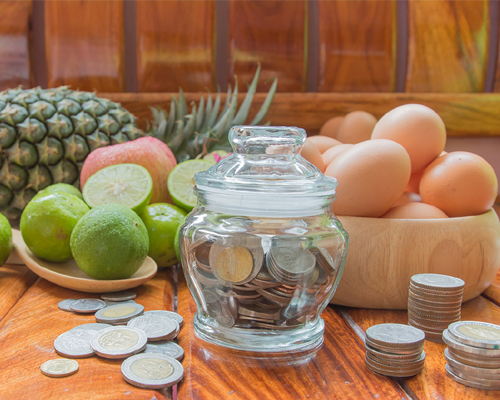10 Tips to Help You Save Money on Groceries

Think you need to spend a bundle to eat healthy foods? These tips will help you stay on-budget and prepare wholesome meals that the whole family will love.
1. Eat Before You Shop
You’re less likely to make impulse purchases when you’re not hungry.
2. Make a List and Stick to It
Writing a grocery list before going to the store will save you time and money and help you shop only for the foods you need.
3. Be on The Lookout for Sales of Healthy Foods
Check out flyers, coupons and websites for deals. Create your meal plan and shopping list based on these foods.
4. Buy Only What You’ll Use
Buying food in large quantities may lead to waste and spoilage. Freeze meat, poultry, fish and bread to extend their shelf life.
5. Compare Prices
When bargain-hunting, it’s easy to get swayed by a lower price tag. Remember to compare the unit price to know which product is truly less expensive. The unit price is often shown on the grocery store’s price label. Also, in grocery stores where price-matching is available, use flyers to price match products that are on sale.
6. Buy Fresh Vegetables and Fruit When They Are in Season
They’re usually tastier and less expensive at this time, and you can freeze extras for later. Buying food out of season can be more expensive.
7. Choose Frozen as an Affordable Option for Out-of-season Produce
When fresh produce isn’t in season, frozen versions are usually affordable and nutritious options.
8. Include Beans, Lentils and Other Legumes
These are great protein-rich foods that are lower in fat and often more budget-friendly sources of protein.
9. Limit Foods and Beverages High in Saturated Fat, Sodium and Sugars
Items such as cookies, pastries, salty snacks and soft drinks are usually low nutritional value and can add up on your grocery bill. Check the Nutrition Facts table on the label to identify foods with less than 15 per cent per cent Daily Value (DV) of these nutrients.
10. Stock Up on Lower-sodium Goods During Sales
Choose unsalted or low-sodium foods whenever possible. Look for words such as “sodium-free,” “low sodium,” “less sodium,” “reduced sodium” or “no salt added” on the food label. But be careful – it’s important to also choose foods that are not high in sugar and saturated fat, as sometimes these are used to compensate for the reduction in salt.
Source and photo. (NC) Newscanada.com








